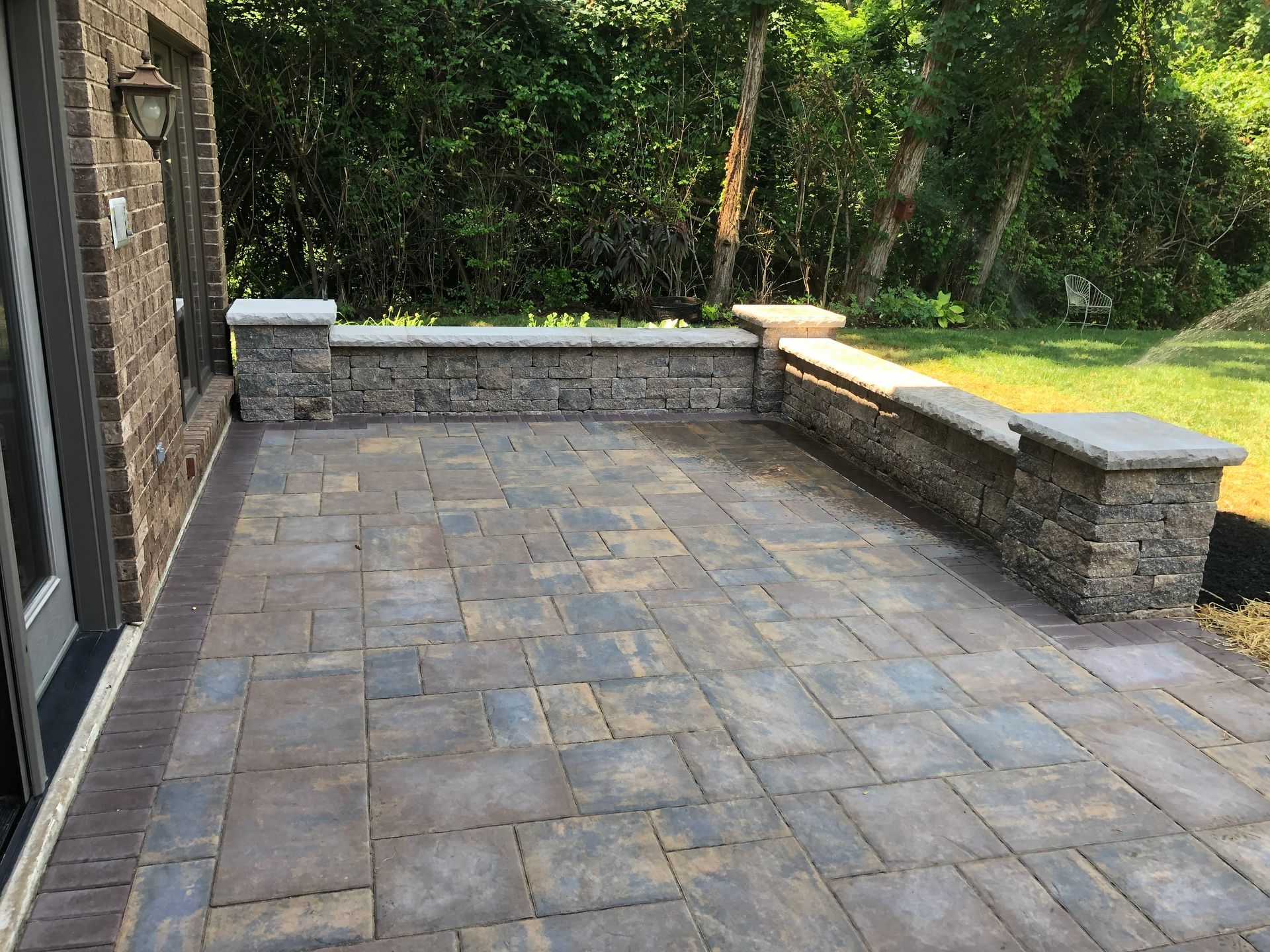What is Hardscaping? Learn the Basics of Hardscaping
The Basics of Hardscaping
What is hardscaping? Hardscaping integrates your landscape with pathways, walls, patios, outdoor kitchens, and other elements made of natural stone, concrete, brick, wood, or metal. Hardscaping can also include retaining walls, water features, fire pits, driveways, or pergolas. Unlike soft-soaping, which includes planting flowers, shrubs, and trees, hardscapes create functional and aesthetic features to define your outdoor space and make your yard more usable year-round.
Defining Hardscaping: More Than Just Landscaping
A hardscape can dramatically transform an outdoor area and improve functionality with durable, low-maintenance solutions to withstand weather conditions. Integrating hardscaping into landscaping creates a balanced, cohesive outdoor environment that achieves aesthetic improvements and long-term value. Hardscaping can provide erosion control, improved accessibility, extended outdoor living areas, and manage drainage. It offers beauty and utility beyond what soft-soaping does.
Key Elements of Hardscaping: Materials and Techniques
Hardscape design uses a variety of materials and techniques including:
Hardscaping Materials:
Stone: Natural stone, like flagstone, granite, or limestone, is often used for patios, walkways, and retaining walls because of its durability and timeless appeal.
Concrete: Versatile and cost-effective, concrete can be poured, stamped, or molded into shapes and patterns, making it ideal for driveways, patios, and decorative elements.
Brick: Brick has a classic look and is used for walkways, patios, and retaining walls. It blends with different styles. and is highly durable.
Wood: Wood is used for decks, pergolas, and fences. Treated or composite woods are preferred for their resistance to weathering and longevity.
Metal: Metals like steel and aluminum are used for edging, planters, and accents, adding a modern or industrial touch to hardscapes.
Hardscaping Techniques:
Paving: Involves laying down stones, bricks, or pavers in a pattern to create walkways, patios, and driveways. Proper installation prevents shifting or settling.
Retaining Walls: Built to hold back soil and create level areas on sloped terrain. Techniques include stacking stone, concrete blocks, or timbers, requiring proper drainage systems to prevent water damage.
Water Features: Incorporating fountains, ponds, or waterfalls using stone, concrete, and sometimes metal. These features need precise engineering to ensure proper water flow and filtration.
Lighting: Strategic placement of outdoor lighting enhances the safety and ambiance of hardscape features. Techniques include using low-voltage lighting to highlight pathways, steps, and architectural elements.
Grading and Drainage: Essential for preventing water damage and ensuring longevity, grading involves shaping the land to direct water flow, while drainage systems, like French drains or permeable pavers, are installed to manage excess water.
By thoughtfully selecting materials and using proper techniques, hardscaping can significantly enhance the functionality, durability, and beauty of your outdoor space.
Benefits of Hardscaping for Your Dayton, Ohio Property
Long-term advantages of adding hardscaping to your property include:
Increased Usable Space: Hardscaping elements like patios and walkways create defined areas for outdoor living, making your yard more inviting and functional for activities and gatherings.
Low Maintenance: Hardscaping materials require minimal upkeep compared to lawns and gardens, saving time, effort, and money on maintenance.
Durability: Hardscape materials are designed to endure weather conditions, ensuring your outdoor features remain intact and visually appealing for years.
Erosion Control: Properly designed hardscaping, including retaining walls and drainage systems, helps manage water flow and reduce soil erosion on your property.
Increased Property Value: Attractive and functional hardscaping features can boost your property's curb appeal and overall market value.
Enhanced Aesthetic Appeal: Hardscaping adds structure and visual interest to your landscape, creating a more polished and cohesive look.
Improved Safety: Well-lit pathways, stairs, and retaining walls increase safety by reducing the risk of tripping or falling, especially in low-light conditions.
Enhancing Aesthetic Appeal with Hardscaping
Enhancing the aesthetic appeal of your property with hardscaping incorporates focal points to guide the eye and define areas of your landscape, like gardens, seating areas, or pathways. Hardscaping allows the use of patterns, textures, and colors to complement the natural environment and architecture of your home. By integrating hardscaping with soft-soaping elements like plants and trees, you can achieve a balanced, captivating outdoor space to increase curb appeal that adds long-lasting value to your property.
Hardscaping Improves Functionality and Durability
Hardscaping features are crafted from durable materials designed to last through harsh weather conditions, reducing the need for frequent maintenance and repairs. By integrating hardscaping into your landscape, you enhance the overall functionality of your property, creating spaces that are inviting and resilient, capable of standing the test of time while accommodating outdoor activities.
Increasing Property Value from Hardscaping
Hardscaping features like patios, walkways, and retaining walls make a property more attractive to potential buyers and increase property value. These features create additional living spaces, improve curb appeal, and require less maintenance than traditional landscaping, which appeals to homebuyers.
Durable hardscaping materials like stone, concrete, and brick can withstand weather conditions, ensuring longevity which adds to the property's value. Real estate experts state that a well-designed outdoor space can provide a return on investment between 50% to 75%, depending on the quality of the work and the relevance of improvements.
Signature Hardscaping: Your Local Experts in Dayton, Ohio
When you choose Signature Hardscape for your hardscaping projects, you can depend on our professional team to respect your property and use the most current installation techniques. Our expert staff is dedicated to being reliable, organized, and efficient, ensuring you have a smooth and well-organized hardscape experience.
Our Approach to Custom Hardscaping
Our mission at Signature Hardscaping is to offer our customers the most dependable and reputable source encompassing all your hardscaping needs. We provide cost-effective, exceptional services at the highest level of quality to ensure you’re satisfied. We use our expert craftsmanship as well as premium resources to create beautiful, functional hardscapes you, your family, and your guests will enjoy for many years to come. Our goal is to create trust and enduring relationships with each customer. Our work is backed by a solid guarantee.
Transforming Your Vision into Reality
Investing in hardscaping elevates your outdoor space while maximizing the enjoyment and usability of your property. Hiring Signature Hardscape is a wise investment because we’re dedicated to transforming your vision into reality, and creating a space you’ll be proud of that exceeds your expectations.




